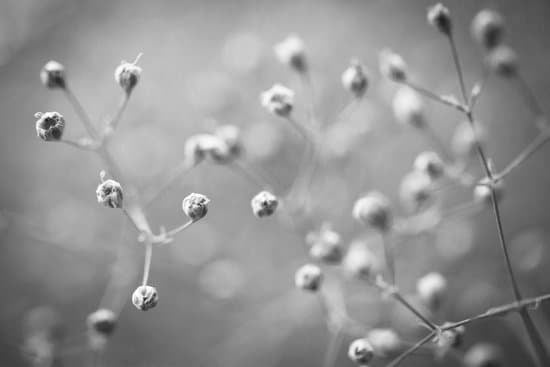Are you looking for ideas for gardens with no sun? Gardening in shaded areas presents unique challenges and opportunities. From choosing the right plants to creative design ideas, there are many ways to create a beautiful and thriving garden even without direct sunlight.
When it comes to gardening in shade, it’s important to understand the specific challenges that come with the lack of sunlight. While many traditional garden plants require ample sunlight to thrive, there are plenty of shade-loving varieties and species that can bring color and life to sun-deprived spaces.
In this article, we will explore the various aspects of gardening without sun, including plant selection, design ideas, soil preparation, container gardening, shade structures, maintenance tips, and real-life success stories. By embracing the beauty and potential of gardens with no sun, you can create a lush and vibrant outdoor space regardless of light conditions.
Choosing the Right Plants
When creating a garden in a shaded area, it is essential to choose the right plants that thrive in low light conditions. Fortunately, there are numerous shade-loving plant varieties and species that can still bring beauty and vibrancy to your garden. From colorful foliage to delicate blooms, there are plenty of options to explore when selecting plants for gardens with no sun.
One popular choice for shady areas is the hosta plant, known for its decorative leaves that come in various shapes and sizes. Another option is the impatiens, a flowering plant that adds a pop of color to shaded areas. For those looking for greenery, ferns are an excellent choice as they can flourish in the absence of direct sunlight. Additionally, certain species of hydrangeas and coral bells also thrive in shaded environments, offering beautiful blooms and foliage.
When choosing the right plants for your shade garden, consider factors such as the specific lighting conditions of the area, as well as the climate and soil quality. By doing thorough research and seeking advice from gardening experts, you can create a diverse and visually appealing garden even without direct sunlight.
In addition to these traditional shade-loving plants, there are also some unconventional options that can add interest to your garden with no sun. For example, certain types of mosses and lichens can thrive in shaded environments, adding unique textures and colors to your garden space. It’s important to explore all the possibilities when selecting plants for your shade garden to truly maximize its potential beauty.
Creative Design Ideas for Shaded Gardens
When it comes to designing gardens with no sun, creativity is key. The lack of sunlight in these spaces can pose a challenge for traditional garden designs, but with the right approach, shaded gardens can be just as beautiful and vibrant as their sunny counterparts.
One creative idea for shaded gardens is to incorporate a variety of textures and colors to add visual interest. Consider using different shades of green, as well as pops of color from flowers or foliage to create an eye-catching design.
Another design idea for shaded gardens is to embrace the natural beauty of the space by creating a woodland-inspired garden. This could include incorporating native shade-loving plants, such as ferns and hostas, and creating meandering pathways that invite exploration. Additionally, adding elements like moss-covered rocks or a small babbling brook can enhance the serene and peaceful atmosphere of a shaded garden.
A third creative design idea for shaded gardens is to think vertically. Since many shade-loving plants are naturally found in forested areas where they often compete for light, consider using vertical gardening techniques such as trellises, hanging baskets, or wall-mounted planters to maximize space and add visual interest.
By utilizing these techniques, you can create a lush and dynamic garden even in the absence of direct sunlight. With some creativity and thoughtful planning, designing a beautiful garden with no sun is entirely achievable.
Proper Soil Preparation and Maintenance for Shade Gardens
When it comes to gardening in areas with limited sunlight, proper soil preparation and maintenance are crucial for the success of your shade garden. Without the benefit of direct sunlight, plants in these areas rely heavily on the nutrients and structure of the soil to thrive. Here are some important considerations for preparing and maintaining the soil in your shade garden.
Soil Preparation
Before planting in a shaded area, it’s essential to assess the existing soil conditions. Many shade-loving plants prefer moist, well-draining soil with a slightly acidic pH level. Testing the soil and amending it as needed with organic matter, such as compost or peat moss, can help improve its texture and fertility. Consider adding materials like shredded leaves or bark mulch to enhance moisture retention and provide a natural source of nutrients as they break down over time.
Weed Control
In shady environments, weeds may be more prevalent due to reduced competition from desirable plants. Taking proactive measures to control weeds not only maintains the visual appeal of your garden but also reduces competition for water and nutrients among your chosen plants. A layer of mulch can help suppress weed growth while contributing to overall soil health.
Fertilization
Since shade gardens often have slower rates of nutrient cycling compared to sunny areas, supplementing with a balanced fertilizer specifically formulated for shade-loving plants can support healthy growth. However, it’s important not to over-fertilize, as excessive nutrients can lead to imbalances or even damage sensitive plant roots. Always follow recommended application rates and consider using slow-release fertilizers for more consistent nourishment.
By paying careful attention to soil preparation, weed control, and fertilization, you can create an optimal growing environment for your shade garden plants. These efforts will not only promote healthier growth but also contribute to the long-term sustainability of your shaded outdoor space.
Innovative Container Gardening for Sun-Deprived Spaces
When it comes to gardening in spaces with limited sun, innovative container gardening can be a game-changer. Whether you have a small balcony, patio, or even just a few windowsills, container gardening allows you to bring greenery and life into sun-deprived areas. It’s important to choose the right plants for your containers, as well as to consider the design and placement of your containers for maximum impact.
Choosing the Right Plants for Containers
When selecting plants for container gardening in shaded areas, it’s essential to opt for shade-loving varieties and species. Some popular choices include ferns, hostas, caladiums, and coleus. These plants thrive in low-light conditions and can bring vibrant foliage and texture to your shaded space. Additionally, consider mixing different heights and textures of plants in each container to create visual interest.
Designing Creative Container Displays
Innovative container gardening goes beyond simply planting in pots – it also involves creative design ideas to make the most of your sun-deprived spaces. Consider using unique containers such as old barrels, wooden crates, or decorative ceramic pots to add personality to your garden. You can also play with vertical gardening by using hanging baskets or wall-mounted planters to maximize space.
Maintenance Tips for Container Gardens
Proper care is crucial when it comes to container gardening in shaded areas. Make sure your containers have adequate drainage and water your plants regularly since soil in containers tends to dry out more quickly. Additionally, fertilize your plants according to their specific needs and prune them as necessary to keep them healthy and thriving in their sun-deprived environment.
Implementing Shade Structures and Features in Your Garden
When it comes to gardening in spaces with no sun, implementing shade structures and features can make a significant difference in the success of your garden. By providing the right amount of shade and protection, these elements can create a conducive environment for a variety of plants to thrive. Here are some ideas for incorporating shade structures and features into your garden:
1. Arbors: Adding an arbor to your garden not only creates a focal point but also provides partial shade for plants that require protection from direct sunlight. You can train climbing plants such as clematis, wisteria, or honeysuckle to grow over the arbor, adding vertical interest to your shaded garden.
2. Shade sails: If you’re looking for a flexible and customizable shading option, consider installing shade sails. These fabric structures can be easily adjusted to provide the right amount of shade for different areas of your garden throughout the day. They also come in a variety of colors and shapes, allowing you to add visual interest to your outdoor space.
3. Pergolas: Pergolas offer both shade and architectural appeal to gardens with no sun. You can grow shade-tolerant vines or hanging plants on the structure, further enhancing its cooling effect and creating a cozy atmosphere in your shaded garden.
Incorporating these shade structures and features into your garden not only provides relief from harsh sunlight but also adds aesthetic value to your outdoor space. With the right combination of shade-loving plants and well-planned structure placement, you can transform even the shadiest areas into vibrant and inviting gardens with no sun.
Maintenance Tips for Keeping Shade Gardens Healthy and Vibrant
When it comes to maintaining a shade garden, there are a few key tips and tricks that can help keep your plants healthy and vibrant. Since these gardens don’t receive direct sunlight, it’s important to make sure they have the proper care and maintenance to thrive. Here are some maintenance tips for keeping shade gardens healthy:
1. Watering: In a shaded garden, the soil may not dry out as quickly as it would in a sunny spot. It’s important to monitor the moisture levels in the soil and water accordingly. Be sure to water the plants at the base to avoid any mold or mildew issues that can arise from excess moisture on the leaves.
2. Pruning: Regular pruning is essential for maintaining the health and shape of shade-loving plants. Remove any dead or diseased branches, as well as any overgrowth that may be blocking essential sunlight from reaching other parts of the plant.
3. Fertilizing: Since shaded gardens often have different soil conditions than sunny ones, it’s important to use a fertilizer specifically formulated for shade-loving plants. Look for a slow-release fertilizer that will provide essential nutrients over time without overstimulating growth.
4. Pest Control: Keep an eye out for pests and diseases that may thrive in shady, damp environments. Inspect your plants regularly for any signs of infestation and take appropriate measures to address any issues.
By following these maintenance tips, you can ensure that your shade garden remains healthy and vibrant despite the lack of direct sunlight. With some dedicated care and attention, you can enjoy a lush and thriving garden even in sun-deprived spaces.
Showcasing Real-Life Examples and Success Stories of Gardens Thriving in the Shade
Many people mistakenly believe that a lack of sun means they cannot have a beautiful garden. However, there are numerous ways to create thriving gardens in shaded areas. From utilizing shade-loving plants to innovative design ideas, these real-life examples and success stories showcase the potential of gardens with no sun.
One key idea for gardens with no sun is to choose the right plants that thrive in shady conditions. For example, ferns, hostas, and astilbes are popular choices for shaded gardens due to their low light requirements. In addition, many flowering plants such as impatiens, begonias, and bleeding hearts also do well in shade. These real-life examples demonstrate how diverse and vibrant a shaded garden can be when the right plants are chosen.
Another successful approach for shaded gardens is creative design ideas that emphasize texture and foliage rather than flowers. A mix of different leaf shapes and sizes can add interest to a shade garden, creating a lush and visually appealing space. Real-life examples show how strategic placement of different plant varieties can create depth and dimension in a shaded garden, turning what may seem like a limitation into an opportunity for creativity and beauty.
Embracing the beauty and potential of gardens with no sun also involves proper soil preparation and maintenance. Success stories often highlight the importance of amending the soil with organic matter to improve its structure and fertility, as well as regular watering and mulching to retain moisture in shaded areas. These practical tips contribute to the overall health and vibrancy of shaded gardens, showing that with careful attention to soil and maintenance, even sun-deprived spaces can flourish.
Conclusion
As we conclude our exploration of gardens with no sun, it becomes clear that a lack of sunlight does not have to hinder one’s gardening aspirations. By understanding the challenges and limitations of gardening in shaded spaces and implementing the right strategies, anyone can create a vibrant and beautiful garden even in the absence of direct sunlight.
From choosing the right shade-loving plants to implementing creative design ideas and innovative container gardening, there are numerous ways to bring life and color to shaded areas. Proper soil preparation, maintenance, and the incorporation of shade structures can further enhance the health and beauty of gardens with no sun.
It is essential to remember that gardens with no sun have their own unique charm and potential. By showcasing real-life examples of successful shade gardens, we hope to inspire others to embrace the possibilities and beauty of gardening in shaded spaces.
With the right knowledge, resources, and creativity, anyone can transform a sun-deprived area into a flourishing garden oasis. So go ahead, experiment with different plants and designs, and let your imagination run wild as you create your own masterpiece in the shade.
Frequently Asked Questions
How Do You Landscape a Area Without Sun?
Landscaping an area without sun can be challenging, but it’s not impossible. You can opt for shade-loving plants like ferns, hostas, and coral bells, which thrive in low-light conditions. Additionally, incorporating hardscape elements like statues, birdbaths, and pathways can add visual interest to the shaded area.
What to Do if Your Garden Doesn’t Get Enough Sun?
If your garden doesn’t get enough sun, there are still plenty of options to make it thrive. Consider growing shade-tolerant plants such as begonias, impatiens, and fuchsias.
You can also create a woodland garden with native plants that naturally grow in shaded areas. And don’t forget to use organic matter and mulch to improve soil quality and moisture retention.
How Do You Enjoy a Shady Garden?
Enjoying a shady garden can be a peaceful and secluded experience. Add comfortable seating areas such as benches or hammocks to create cozy nooks for relaxation or reading. Incorporate water features like fountains or ponds to bring soothing sounds and movement into the garden. Finally, embrace the tranquility of a lush green space away from the harsh sun.

Welcome to my gardening blog! I am passionate about plants and enjoy sharing my knowledge and experiences with others. In this blog, I will write about everything related to gardening, from tips on how to get started to updates on my own garden projects.





